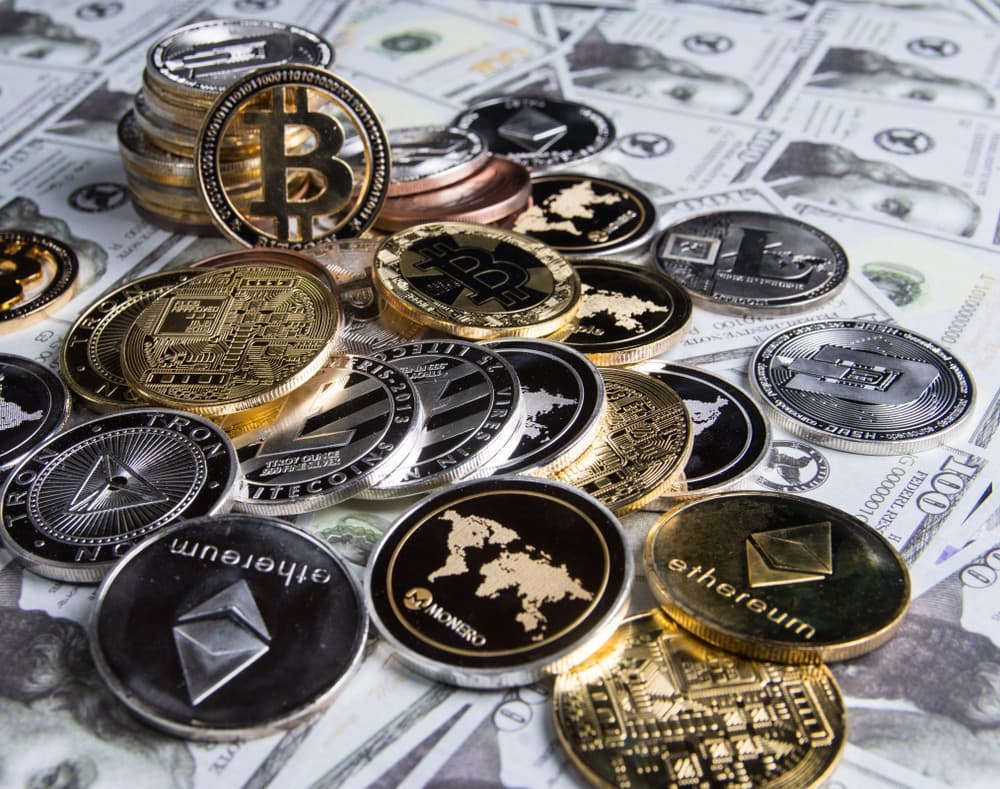Beneath the Surface
Can You Invest Better than Berkshire Hathaway?
May 8, 2025 • 7 minute, 30 second read

“Successful investing is about managing risk, not avoiding it.”
–Ben Graham, The Intelligent Investor

May 8, 2025 — Note from Andrew: In 2010, I had the opportunity to trek out to Omaha, Nebraska, to attend the Berkshire Hathaway annual meeting.
Below is the second of two parts regarding my trip, which I wrote for one of our predecessor publications, The Sovereign Individual.
With the announcement of Buffett’s retirement, and looking at how both Berkshire Hathaway and gold have fared in the past 15 years, it’s comforting to reflect on the power of a long-term investment. Enjoy!
The 3 Most Glaring Differences Between
The Sovereign Individual
and Berkshire Hathaway
(Why Our Value is Deeper, Safer and More International)
As I wrote to you earlier, I just spent a long weekend in Omaha, Neb., at what is likely the largest investment congregation in the world: the Berkshire Hathaway annual meeting.
As a shareholder and — for the most part — admirer of how the company has grown and compounded wealth in a shareholder-friendly manner (the investment in Goldman Sachs not withstanding), I couldn’t help but notice a few areas where the value investment principles of Warren Buffett differ in comparison to the value approach taken by our writers and Council of Experts at The Sovereign Society.
It’s a Small Circle (of Competence) After All!
One of Buffett’s best investment principles is the “circle of competence.”
Simply put, it means only invest in what you can understand. And it’s both a blessing and a curse, because Buffett’s circle of competence has led to investment allocations that lag where future global growth will lie.
Now, don’t get me wrong. I’m not talking about Berkshire’s lack of technology stocks or the like. I’m talking about Berkshire’s underrepresentation in global markets. After all, the benefits of global diversification — and not just in equities — form the core of what The Sovereign Society stands for.
During the Q-and-A session, Buffett and Berkshire’s vice chairman, Charlie Munger, were asked several questions regarding India, China and the prospect of higher growth in the rest of the world.
As Munger so succinctly stated, “We [Berkshire] have no global allocation system.”
However, in comparison, another value-oriented investor was able to compound his wealth rather quickly with shares of Japanese companies during the 1950s and ’60s, as they ratcheted up the quality and market share of their merchandise.
This value approach also worked on shorting overvalued tech stocks in the late 1990s and early 2000s.
His name? Sir John Templeton.
Nevertheless, Berkshire is making gains in international investing — but on terms that still place the majority of the company’s earnings in the United States.
Rating Agencies are Good, Who Cares if They’re Compromised? (We Do!)
Now, I’ve previously written about how the rating agencies were compromised in terms of the housing market. And as long as there’s a conflict of interest wherein a rating agency gets paid by the person they’re rating, there’s going to be significant “rating inflation” by the rating agencies.
Unfortunately, as Buffett pointed out during the Q-and-A, the rating agencies have it made: low capital costs, and there’s an oligopoly by the major ratings agencies.
This spells easy profits, but it also lends itself to lazy practices like the “rating inflation” that led subprime Collateralized Debt Obligations (CDOs) to look squeaky-clean despite being a worse investment than horses and buggies circa 1910.
The only solution I could think of would be to break that oligopoly. Someone’s got to get this ball rolling, so I’ll do it: If you know someone who needs some debt rated, give me a call. I’ve got reasonable rates and tend to be one of those “glass half empty” types when it comes to investments.
Kidding aside, I’d be remiss if I failed to point out that, despite the high praise Buffett had for the rating agencies during the Q-and-A, he’s been quietly divesting large chunks of Berkshire’s stake in rating agency Moody’s (MCO).
It’s true what they say: Actions speak louder than words.
But given the cozy relationship that the rating agencies have with their customers, the incentive to over-rate still exists.
We wouldn’t have gotten involved in the first place. Period.
Click Your Heels and Say: ‘There’s no Such Thing as Gold’
There was one investment area in general that didn’t see the light of day during the shareholder meeting: commodities as an investment.
And because hard assets, like gold and silver, are a core constituent of the TSI portfolio, the fact that there weren’t enough shareholders asking questions about commodities to reach Buffett was a bit of a concern.
Perhaps the last time Buffett spoke on record about gold was back in 1998, during a Q-and-A with business students at Harvard.
He said, “It gets dug out of the ground in Africa, or someplace. Then we melt it down, dig another hole, bury it again and pay people to stand around guarding it. It has no utility. Anyone watching from Mars would be scratching their head.”
I’m not sure what Berkshire’s succession plans entail, but a more open-minded chairman of the board might want to look at commodities more closely. Gold has had a strong track record, and with the dotcom bubble bursting and the housing crisis, gold mining stocks have been on a tear this decade.
Berkshire would surely benefit from acquisitions that are as far away from the financial sector as possible … and the acquisition of Burlington Northern certainly shows a willingness to do so.
Now, part of that difference in the performance of Berkshire Hathaway and gold mining stocks like Goldcorp (note: Goldcorp was acquired by Newmont Mining in 2019) can be explained by the size of the companies: Berkshire is simply too large to grow 2,000 percent anymore.
That would place its market cap in the trillions of dollars, and catapult the company well past its current size as the 11th-largest company in America, according to the latest Fortune 500 list.
And that’s why the best part of value investing is with smaller companies: the growth potential is so much the greater.
Buffett’s missed out on what gold is: a store of value, and the best hedge against inflation. It’s somewhat ironic, as he was bearish on currencies during the Q-and-A at the shareholder meeting for the exact opposite reasons — that fiat currencies are susceptible to inflation and the dollar has lost around 90 percent of its value in Buffett’s lifetime.
Ironically, Buffett has been interested in other commodity-based companies, such as Korean-based POSCO, and even held physical silver in the late 1990s … but has since sold out.
Despite these differences, I’m a shareholder, and likely will be for a long time. And my investment with Berkshire is made with the knowledge that I won’t always agree with management … but at least I can say that the interests of management align with shareholders.
Until next time, stay sovereign!
Disclosure: The author owns ‘B’ shares of Berkshire Hathaway
Andrew Packer
Grey Swan Investment Fraternity
P.S.: Gold’s performance over the past 15 years has been exemplary, overall. But with its peak in 2011 followed by five years of trending lower, the metal has since lagged Berkshire’s returns. Only in the past three years has it started to outperform Berkshire again. Similarly, gold mining stocks have had moments that far outperform Berkshire, for years at a time. We suspect now may be one of those times, based on our research into gold’s price trends.
Ultimately, investors will want to own a mix of strong companies with cash flows, as well as fiat-alternatives like gold and bitcoin for downside protection. Owning these alternative assets at the right time can help protect your wealth and generate superior returns ovre time.
Turning to the reader email front, Larry writes in:
I greatly appreciate your Grey Swan email updates. A quick comment. “Our dollar, your problem” is a quote from Richard Nixon’s first Secretary of the Treasury, John Connally.
In today’s backdrop, the dollar may soon become our problem, as many nations seem to be moving toward alternatives to dollar-based trade, and China is setting up physical gold repositories in multiple nations, associated with the Shanghai Gold Exchange, as clearing centers for Yuan-based international trade, settled in gold. If these efforts succeed, the dollar’s role as a reserve asset will continue to decrease, bringing with it further sale of U.S. Treasuries, and potentially higher interest rates. Our problem indeed.
You’ve hit the nail on the head, Larry. While the dollar won’t disappear overnight, it continues to lose purchasing power and international demand. Eventually, that will pose a problem. And it’s one of many reasons we continue to see value in gold here, and alternative assets such as bitcoin.
Your thoughts? Please send them here: addison@greyswanfraternity.com



